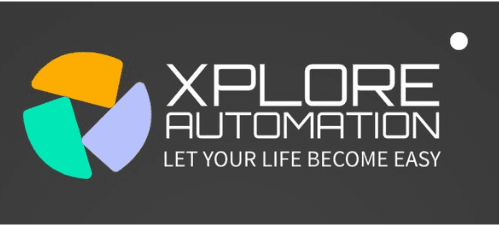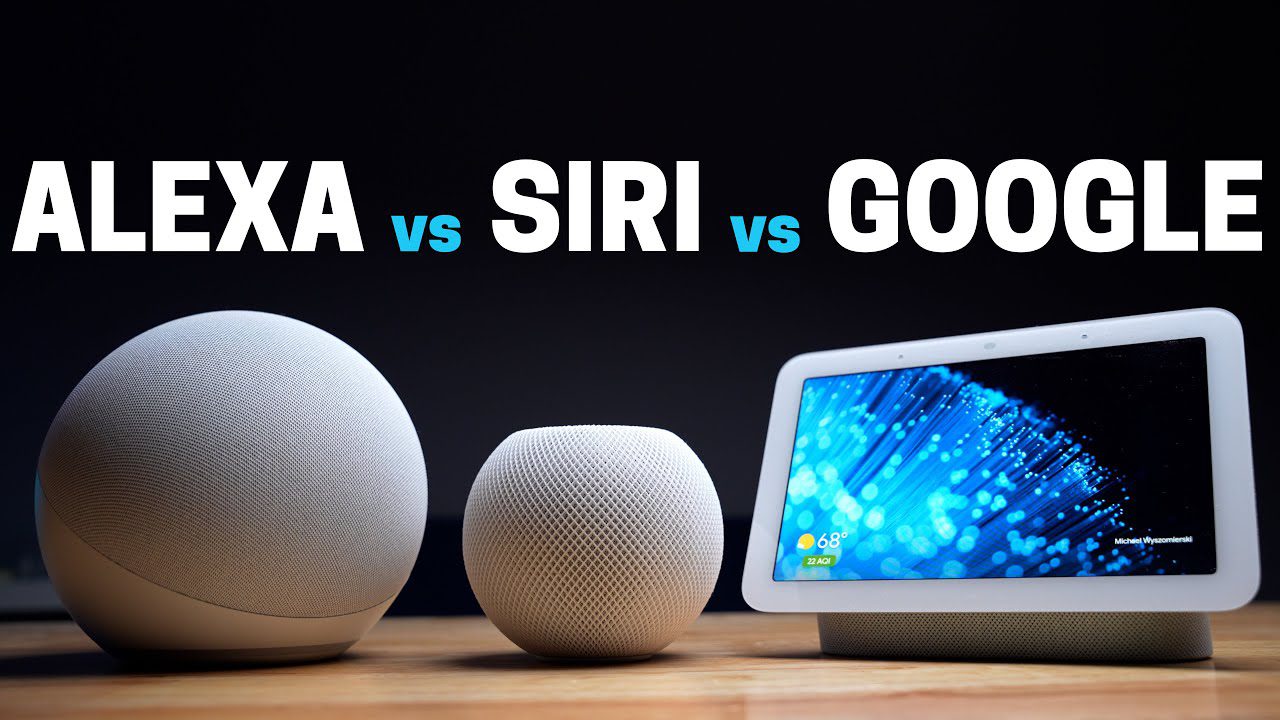Home Assistant is an open-source home automation platform, while HomeKit is Apple’s proprietary home automation framework. The former is highly customizable, and the latter seamlessly integrates with iOS devices. In this article, we are going to discuss the latest update on Home Assistant Vs HomeKit.
Smart home enthusiasts often find themselves comparing Home Assistant and HomeKit as they seek to automate their homes. Home Assistant offers unparalleled flexibility for those who enjoy tinkering and customizing their setup. Its open-source nature means it supports a vast array of devices and sensors, allowing for a tailored smart home ecosystem.
On the other hand, Apple’s HomeKit is favored for its user-friendly interface and robust security features. It excels in providing a streamlined smart home experience for users already invested in the Apple ecosystem. Choosing between the two depends on your technical expertise, desired level of customization, and existing devices. Both platforms aim to elevate the smart home experience, but they cater to different user preferences and needs regarding integration and operation.
Introduction To Smart Home Ecosystems
Introduction to Smart Home Ecosystems
Welcome to the futuristic world of smart home ecosystems.
These systems offer convenience and control like never before.
Imagine adjusting lights, climate, and even your coffee maker with a simple voice command.
That’s the power of a smart home.
Rise of Smart Homes
Rise Of Smart Homes
The idea of smart houses is no longer something of the future.
They’re here, and they’re making everyday life easier and more efficient.
With smart homes, users enjoy enhanced security, energy savings, and convenience.
Key Players: Home Assistant and HomeKit
Key Players: Home Assistant And Homekit
Two major platforms stand out in the smart home space: Home Assistant and HomeKit.
Home Assistant is open-source, offering flexibility and a vast compatibility range.
HomeKit, built by Apple, assures seamless integration and top-tier security for iOS users.
- Home Assistant:
- Open-source and customizable
- Supports a wide range of devices
- Community-driven with extensive plugins
- HomeKit:
- Designed specifically for Apple users
- Easy and secure setup
- Integration with Siri for voice control
Historical Evolution
The journey of smart home technology brings us two standouts: HomeKit and Home Assistant. Each platform evolved distinctively. Let’s dive into their origins and development.
Origin Of Homekit
Apple announced HomeKit during its Worldwide Developers Conference in 2014.
It offered a seamless way for Apple users to control smart home devices. Since then, HomeKit has grown, welcoming various compatible devices.
- 2014: Announcement of HomeKit.
- 2016: Introduction of the Home app in iOS 10.
- Continuous updates to increase compatibility and features.
Development Of Home Assistant
Home Assistant began in 2013 as a small open-source project.
Its goal was to provide privacy-focused control over smart devices.
| Year | Milestone |
|---|---|
| 2013 | Project started by Paulus Schoutsen. |
| 2016 | The first stable release is version 1.0. |
| 2021 | Version 2021.1 introduced a new dashboard. |
Today, Home Assistant supports thousands of integrations. It also keeps data local.
Core Features Compared
When choosing a smart home ecosystem, understanding core features is vital. Home Assistant and Homekit are two popular options. They offer unique benefits to users. This review compares both platforms. It focuses on Interface and Usability, Device Compatibility, and Automation Capabilities.
Interface And Usability
Home Assistant boasts a customizable interface. Users can edit the dashboard to their liking. It supports various skins and themes.
Homekit offers a clean and intuitive design. It’s known for simplicity and ease of use. Users find navigation straightforward here.
Both platforms allow voice control via smart assistants. This makes everyday tasks easier.
Compatibility With Devices
Home Assistant shines in its wide compatibility. It works with thousands of devices. This includes sensors, lights, and cameras. Users appreciate this openness.
Homekit works mainly with Apple-certified devices. Its compatibility is more limited. However, users enjoy reliable and secure connections. They value these connections greatly.
The table below shows a quick comparison:
| Platform | Compatibility | Certification Requirement |
|---|---|---|
| Home Assistant | Extensive | No |
| Homekit | Limited | Yes |
Automation Capabilities
Home Assistant excels in custom automation. Users can create complex triggers and actions. It is perfect for users who love tinkering.
- Custom scripts
- Detailed automation settings
- Supports third-party integrations
Homekit offers streamlined automation. It’s simpler to set up. This is ideal for users who prefer simplicity.
- Easy scheduling
- Location-based triggers
- Seamless Apple device integration
In conclusion, Home Assistant and Homekit cater to different user needs. Their features highlight a balance between customization and user-friendliness. It is important to choose based on your personal preferences.

Credit: m.youtube.com
Setting Up And Integration
Smart homes are the future, and the brain of your smart home is crucial. Home Assistant and HomeKit are two popular choices. Let’s dive into how to get started with these platforms.
Installation Process
Setting up your smart home’s control center is a key step. Begin with these processes:
- Home Assistant: Requires a Raspberry Pi or a similar device. Flash the software onto an SD card. Connect to your network and follow the online guide.
- HomeKit: Setup is straightforward. Use an iOS device to launch the Home app. Devices link automatically through the Apple ecosystem.
Pro tip: Ensure your device’s compatibility with the chosen system before installing.
Connecting Smart Devices
Integrating devices into your smart home is exciting. Follow these steps:
| Platform | Devices Connection Process |
|---|---|
| Home Assistant | Add devices via the user interface. Go to Configuration, then Integrations. Press the ‘+’ sign. |
| HomeKit | Scan or enter the code on your device with your iPhone or iPad. They sync through iCloud. |
Remember: Some devices need specific apps for initial setup. They link with your platform afterward.
Customization And Flexibility
Customization and Flexibility are crucial factors in choosing a smart home ecosystem. Home Assistant and HomeKit cater to different user needs in these areas. Let’s dive into the level of personalization and control each platform offers.
Personalization Options
Home Assistant shines in personalization. Users can tailor their smart home to their exact preferences. Home Assistant has editable dashboards, custom add-ons, and scripts for automation. The platform works with a large variety of devices.
- Editable Lovelace UI for custom dashboards
- Integration with multiple device brands and types
- Custom add-ons and components
- Automation via scripts or Node-RED
HomeKit’s personalization is more streamlined. It offers a simpler, more user-friendly interface. HomeKit’s customization is accessible to all skill levels. Still, it may lack advanced options compared to Home Assistant.
- Simple and intuitive interface
- Limited to Apple-certified devices
- Scene and automation creation via the Home app
Extent Of User Control
The control a user has over their smart home system can define their experience. Let’s compare both platforms.
| Feature | Home Assistant | HomeKit |
|---|---|---|
| Device Compatibility | Extensive with community contributions | Limited to Apple-certified options |
| User Interface Control | Fully customizable dashboards | Standardized but polished interface |
| Automation Complexity | Advanced, with detailed triggers and conditions | Basic, focused on ease of use |
| Local vs Cloud Control | Primarily local, ensuring privacy | The mix of local and cloud, but with Apple’s privacy standards |
Home Assistant grants full reign over your smart home, with complex automation and a vast device ecosystem. Those willing to invest time in Home Assistant will experience unparalleled control.
HomeKit offers a more restricted, but also less complex, system. It is ideal for users seeking a straightforward and secure smart home solution. Apple’s ecosystem is designed to work out of the box, ensuring a consistent user experience.
Security And Privacy
Security and privacy are critical when choosing between Home Assistant and HomeKit
Differentiating Home Assistant and HomeKit involves comparing their security and privacy measures.
Users are increasingly concerned with the protection afforded to their smart home devices.
Each system provides a level of security and privacy but in different ways.
Data Protection Measures
Home Assistant prioritizes data safety with robust security features.
- It employs encryption to secure communication.
- Updates often address vulnerabilities.
- User data never leaves the local network unless configured to do so.
HomeKit also ensures user data protection, through:
- End-to-end encryption for device communication.
- Strict requirements for third-party manufacturers.
- Secure setup with system-generated codes.
Local Vs Cloud Processing
Local processing is a foundation of Home Assistant’s approach to privacy.
With Home Assistant:
- Data is processed on the user’s hardware.
- There is minimal risk of cloud breaches.
- Users maintain full control of their information.
HomeKit provides a hybrid model, with features processed locally:
- Siri queries can be handled on-device.
- Automation runs directly on HomeKit hubs.
- Optional iCloud syncing carries additional privacy considerations.
Both prioritize keeping personal information secure, though their methods differ.
Choosing between Home Assistant and HomeKit depends on personal security preferences and practices.
Community And Support
Choosing between Home Assistant and Homekit involves more than just software. It’s about the vast networks that support them. The community and support that surround these platforms can make or break your smart home experience. From developers to casual users, everyone plays a part. The strength of the community and available resources can determine how swiftly issues get resolved and how much you can achieve with your smart home setup.
Developer Ecosystem
Home Assistant boasts a vibrant developer community. Open-source at heart, it thrives on contributions. Users and developers not only solve problems but also add new functionalities.
- Regular updates push the boundaries of what you can automate.
- Developers from across the globe share custom integrations and plugins.
- Online forums and GitHub repositories teem with activity, fostering innovation.
In contrast, HomeKit’s developer ecosystem has formal structures. Apple oversees development with strict standards. This ensures stability and security but can limit flexibility.
- Apple’s ecosystem benefits from a high level of polish and user assurance.
- Developer tools are robust, though subject to Apple’s approval processes.
- Corporate backing means support comes with established protocols.
User-friendly Resources
When it comes to user-friendly resources, both platforms shine in different areas. The Home Assistant’s documentation is extensive. Forums and social media groups abound with supportive fellow users.
- Official guides and tutorials are readily available.
- The supportive community eagerly assists newcomers.
- Online resources are constantly updated by contributors.
For HomeKit users, resources are polished and user-centric. Apple ensures the information is easy for beginners to digest.
- FAQs, manuals, and official support outline clear usage instructions.
- Apple Stores and customer service provide personalized help.
- Video tutorials make starting or troubleshooting seamless.
Cost Analysis
Choosing a smart home ecosystem can hinge on budget considerations. It’s important to weigh the initial outlay against potential savings and benefits over time.
Initial Investment
Cost often determines the first choice for smart home enthusiasts.
- Home Assistant launches with a versatile approach. Users can start with minimal hardware like a Raspberry Pi.
- HomeKit leans towards more premium-priced devices. Apple-centric hardware often carries a higher price tag.
- Home Assistant offers a broad compatibility range. This factor leads to potential cost savings.
- HomeKit promises an integrated experience with less maintenance. This convenience can be worth the extra upfront cost for some.
Price tags differ depending on individual needs and desired complexity.
Table for Cost Comparison
| Product Type | Home Assistant | HomeKit |
|---|---|---|
| Starter Kit | $70 – $150 | $180 – $350 |
| Extra Sensors | $10 – $30 | $30 – $60 |
| Smart Bulbs | $15 – $35 | $25 – $50 |
Long-Term Value
Long-term Value
Assessing the cost goes beyond upfront expenses.
Reflect on the longevity and scalability of each system. This understanding could sway your decision.
Pros And Cons
Exploring the smart home world often leads to a debate: Home Assistant versus HomeKit. Both platforms come with their specific strengths and drawbacks. It’s important to understand these to choose the best fit for your home. Let’s delve into what each platform offers, as well as some potential limitations users might face.
Advantages Of Home Assistant
- Open-Source Flexibility: Home Assistant thrives on its open-source nature. This allows for endless customization.
- Wide Compatibility: It supports a vast array of smart devices. This means more choices for users.
- No Subscription Fees: Home Assistant is free. You have full control without monthly charges.
- Privacy Focused: User data stays within the home. It provides a high level of security.
- Community-Driven: A strong community exists for support and development, constantly bringing new updates and features.
Benefits Of Homekit
- User-Friendly Interface: HomeKit prioritizes simplicity in its design, making smart home control intuitive.
- Seamless Integration with Apple Devices: For Apple users, HomeKit offers unmatched integration with their devices.
- Voice Control with Siri: Siri enhances the convenience of HomeKit through hands-free control.
- Secure: HomeKit is known for its strong security features, ensuring user privacy and data protection.
- Certified Products: Only certified products work with HomeKit, guaranteeing a level of reliability and quality.
Limitations And Trade-offs
| Category | Home Assistant | HomeKit |
|---|---|---|
| Complex Setup | Can be daunting for non-tech users due to manual configurations. | Straightforward but limited to users with Apple devices. |
| Integration | Supports a wider range of devices, potentially complex to integrate. | Simple integration but limited to certified devices. |
| Cost | Initial hardware investment might be needed, but no ongoing costs. | Potentially higher costs for certified accessories. |
| Customization | Highly customizable, which could be overwhelming for some. | Less customizable, prioritizing ease of use over flexibility. |
| Support | Community-based support may vary in quality. | Official support is available but can be limited to third-party devices. |

Credit: www.macrumors.com
Future Predictions
The realm of smart home technology consistently evolves, unveiling new possibilities and innovations. In this futuristic exploration, we dive into emerging trends and anticipated developments for two major players: Home Assistant and HomeKit. Here’s a glimpse into the exciting advancements we may soon witness.
Emerging Trends In Smart Home Tech
As smart homes become more sophisticated, several trends are gaining momentum:
- Integration: Devices will work seamlessly together, regardless of the brand.
- Voice Control: Interactions with smart homes will be more conversational and natural.
- AI & Machine Learning: Systems will learn habits and adjust settings automatically for optimum comfort and efficiency.
- Privacy and Security: Innovations in data protection will become a top priority for users.
- Energy Efficiency: Smart homes will play a crucial role in managing energy usage more effectively.
Anticipated Developments For Home Assistant And Homekit
Looking ahead, Home Assistant and HomeKit are set to bring fresh features:
| Platform | Developments |
|---|---|
| Home Assistant |
|
| HomeKit |
|
Both platforms aim to enhance user experience with intuitive controls and smarter automation.
Final Verdict
Choosing a smart home platform is a big decision. Let’s dive into the final verdict between Home Assistant and HomeKit. Both have strengths, and we’ll help you find which fits your home best.
Choosing The Right Platform
Your lifestyle and tech preferences dictate the best fit. Consider these points:
- Compatibility: Home Assistant shines with various devices.
- Privacy: HomeKit prioritizes your data security.
- Customization: Home Assistant offers more flexibility.
- User-Friendly: HomeKit is simpler for newcomers.
Conclusion And Recommendations
Let’s wrap it up. Both platforms have their merits.
| Feature | Home Assistant | HomeKit |
|---|---|---|
| Device Support | Extensive | Limited |
| Privacy | Good | Excellent |
| Customization | High | Low |
| Usability | Technical | Easy |
For tinkerers and tech enthusiasts, Home Assistant stands out. Those valuing simplicity and security may lean towards HomeKit.

Credit: www.macrumors.com
Frequently Asked Questions Of Home Assistant Vs Homekit
What Is Home Assistant?
Home Assistant is an open-source home automation platform. It allows users to connect and manage their smart home devices. Home Assistant runs locally, ensuring privacy and full control over your smart home ecosystem.
Homekit Vs. Home Assistant Compatibility?
HomeKit is designed for iOS users and offers seamless integration with Apple devices. Home Assistant offers broader compatibility, supporting a wider range of devices across different brands and platforms.
Can Home Assistant Work With Homekit?
Yes, Home Assistant can integrate with HomeKit. It allows users to control HomeKit-enabled devices through Home Assistant’s platform, enabling a unified smart home experience across various ecosystems.
What Is Easier To Use, Homekit Or Home Assistant?
HomeKit is generally easier to use, offering a more user-friendly, plug-and-play approach tailored for Apple users. Home Assistant requires more setup but offers greater flexibility and customization for tech-savvy individuals.
Conclusion
Deciding between Home Assistant and Homekit hinges on personal needs and technical skills. Home Assistant offers flexibility and a broad device ecosystem. Homekit prioritizes privacy and seamless iOS integration. Both platforms enhance smart home experiences, empowering users to choose the best fit for their digital domicile.
Remember, the ultimate goal is a convenient, connected home — select the system that aligns with your vision.

I am a technology writer and blogger with 17 years of experience in the fields of information technology, artificial intelligence, cyber security, automated systems, and the latest technology trends.

